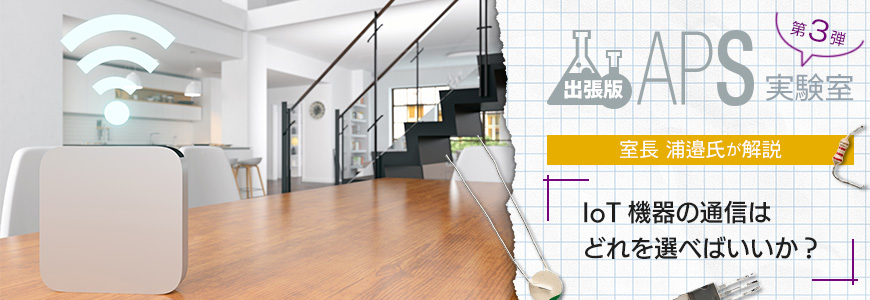I want to add wireless communication to IoT devices! But how do you start? where should i look for it? Isn't there a lot of people like that?
Hello! I am Urabe, the head of the APS laboratory. This time, I would like to introduce wireless, which is indispensable for IoT device development. Haven't you heard these comments when using wireless modules in IoT device development?

“I am making an IoT device, but which wireless communication should I adopt?”
"I want to use wireless, but I want to make the battery last longer!"
"Occasionally communicating is fine, but which one should I choose?"
“Can I only choose Wi-Fi or Bluetooth® to communicate with my smartphone?”
"Is it useless if I don't have technical aptitude?"
"What is technical suitability?"
"How do you use the wireless module?"
This time, while listening to the voice of such a user,
- Wireless knowledge you should know
- Suitable wireless method
- Wifi
- Bluetooth
- Zigbee
- Thread
- Sub-GHz
Focusing on these two points, we will explain the characteristics and usage of each wireless method.
Wireless knowledge you should know
What is wireless?
Remember that there are laws when it comes to using wireless technology.
If you use radio waves without knowing that it is illegal, or even if you use it for a short time, you will be punished by law, so it is a good idea to have a minimum of knowledge.
About the Radio Law and Technical Conformity (Technical Conformity)
"Technical compatibility" should be taken into consideration when considering the introduction of wireless technology.
Technical conformance is a certification given only to products that have cleared the conditions stipulated in the Radio Law. In addition to complying with the Radio Law, certification by a third-party organization is also required. If the product is not certified by the certification body, it is necessary to take sufficient measures such as staggering the sales period before releasing the product.
However, many of the modules that can be purchased have cleared these points, so you can use them with confidence. Macnica Mouser also has information on technical compatibility and whether it can be used in Japan, so be sure to check it out.
So, if you are going to try using a wireless module from now on, let's start by using the wireless module and evaluation kit that we will introduce. We introduce various modules such as Wi-Fi/Bluetooth/Zigbee. Also, if you have no choice but to use a wireless module that has not been certified for technical suitability, you need to operate it in an environment such as an anechoic chamber where radio waves do not leak outside. This is also very important.
Radio law and wireless output
The usable output power [W] of the wireless module is determined regardless of the frequency band used. In the Radio Law, it is written as "antenna power". This antenna power is the so-called "antenna output", which is the power at the time of radio wave transmission.
Each product is different, but is listed in a table like this.
| Wireless standard | Notation |
| Bluetooth module output power | +3 dBm |
| Wi-Fi module output power | IEEE802.11b: 15dBm ±2dBm |
| Sub-G module output power | Active Mode TX +10dBm |
The reason why "dBm" is used instead of W is the dB value based on 1mW.
- 1uW = -30dBm
- 1mW = 0dBm
- 1W = 30dBm
About technical suitability
The next important thing is that each country has its own set of wireless technologies. You must use wireless modules that comply with these standards. This is what is known as "Technical Standards Compliance." "Technical Standards Compliance" is an abbreviation for "Technical Standards Compliance," but it's important to remember that there are two types: "Technical Standards Compliance Certificate" and "Technical Standards Compliance Certification."
"Technical Standards Conformity Certificate" is what is commonly referred to as "Technical Standards Conformity Certificate". This mark (⚡︎〒) is always attached to the wireless module.
Q&A about the Technical Conformity Mark (Ministry of Internal Affairs and Communications Radio Wave Use Homepage)
When you create a wireless module yourself, you will need to apply for and register the circuit diagram, system configuration, etc. with the local radio control station.
Radio waves in Japan are regulated by the Ministry of Internal Affairs and Communications. (Ministry of Internal Affairs and Communications Radio Wave Use Homepage)
When using wireless technology, following the rules is the minimum etiquette. When developing IoT devices, no matter how attractive the specifications may be, you should never choose a wireless module that does not have the technical conformity mark.
Macnica Online Services also has an article on the path to obtaining the Technical Conformity Mark. It may be helpful.
The road to obtaining technical standards conformity certification Episode 1 "Let's get technical standards conformity certification"
The journey to obtaining a technical standards conformity certificate, Part 2: "Preparing the documents"
The journey to obtaining the Technical Standards Conformity Certification, Part 3: "Testing"
Suitable wireless method
I think that the number one key for IoT devices is the wireless communication method, along with sensors.
Wireless can be used in a variety of ways because it can communicate without connecting wires. Even at the site of IoT device development, which radio to use is an important deciding factor, including the operation method.
Here, I would like to briefly review "wireless" and "band".
What is radio
What is wireless in the first place? I will explain briefly.
Radio uses electromagnetic waves to radiate energy into the air using "modulation", the product of a carrier wave and a signal wave. This is called a "transmitter".
For the transmitter there is a "receiver" that receives the energy in the air. There is a mechanism called "demodulation" that returns the modulated data.
Television and radio also transmit audio and video signals on (modulated) signals called carrier waves. Video and audio are extracted from the data "demodulated" by the receiver.
What they have in common is that they use electromagnetic waves. There are various radio frequencies, ranging from a few MHz to 3 THz, and there are various bands from licensed ones to unlicensed ones.
For details, please refer to the Radio Control Bureau of the Ministry of Internal Affairs and Communications.
Main uses and characteristics of radio waves for each frequency band (Ministry of Internal Affairs and Communications Radio Use website)
What is Bandwidth
When dealing with radio, the word "bandwidth" comes up. In English, "BandWidth" is synonymous.
This is an indicator of how much width is effective around one specific frequency. Consider that this wide width allows you to send and receive a lot of data. In return, the number of usable channels is reduced. Conversely, if this width is very narrow, it is not suitable for sending and receiving a lot of data, but it can be said that there are a lot of channels.
It may be a little old material, but in the case of Wi-Fi IEEE802.11b, a bandwidth of about 22MHz is used. Compared to 2.4GHz, 22MHz has a very narrow width (about 0.8% in terms of ratio). The bandwidth of 14ch is used with a width of 2401MHz to 2499MHz, shifting the center frequency little by little.
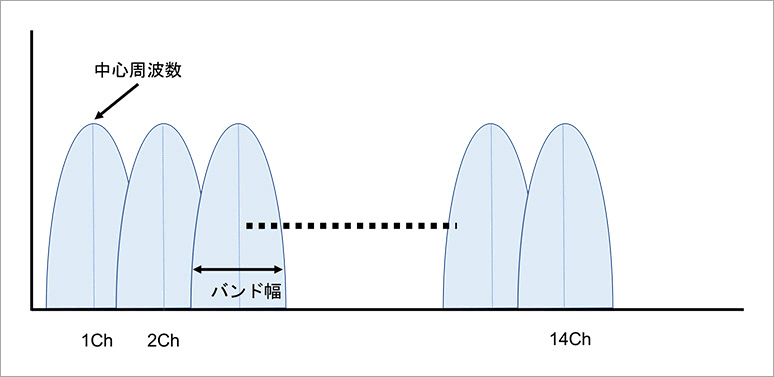
Not only Wi-Fi, but also other wireless systems have almost the same configuration, with specifications such as a large number of channels instead of a small and fragmented bandwidth. And since 2.4GHz is available all over the world, there are many protocols such as Bluetooth, Zigbee, Thread and SmartMesh.
Have you ever heard of LPWA or narrowband in recent IoT devices? This band is narrow! that is how it is. Because it is narrow, it requires less power to be transmitted, and is said to be suitable for sending small pieces of data. There are standards such as LoRa, SigFox, and NW-IoT.
Wireless technology used in IoT devices
When I thought about what would be a typical example of wireless technology for IoT devices, I think it would be the "smartphone" that is familiar to us. Products incorporating the latest standards such as LTE and 3G/4G lines for telephone functions, Wi-Fi, and Bluetooth are being introduced one after another.
Of course, the use of LTE lines for IoT devices has increased considerably, but communication charges and power consumption are a concern. As an IoT device, I think there are many usage scenes when you want to send data to a smartphone.
In that case, standards such as Wi-Fi and Bluetooth will be influential. It's become so common that it's hard to find a smartphone that doesn't have both. So, here, I will briefly explain the 2.4 GHz band wireless technology that does not require a license, such as W-Fi and Bluetooth.
Wifi
Wi-Fi is a representative method of wireless communication technology centered on 2.4GHz. As I explained in the band section, 5GHz is included in addition to 2.4GHz. It has also been standardized by IEEE and has many genealogies as IEEE802.11.x. The evolution of devices is remarkable, and efforts are being made to reduce power consumption without compromising transmission capacity, and there are many lineups from various companies.
Currently, it supports IEEE802.11b/g/n, and in terms of connectivity, it supports the most popular standard, making it very easy to use. The communication speed used to be 11 Mbps, but the latest standard is IEEE802.11ax, which exceeds 6 Gbps. Wi-Fi has become common to be installed in PCs and smartphones, and has already established itself as a complete infrastructure.
Such a Wi-Fi module has an evaluation kit that allows you to immediately start evaluating the module itself.
This time, we will introduce three companies' evaluation kits and wireless modules.
Wi-Fi modules are usually provided in a shielded package, and the Technical Conformity Mark is easily visible. Either UART, SPI, I2C, or SD is available for communication with the microcomputer. This is not limited to Wi-Fi, but most of the wireless modules introduced later have a serial I/F, and it is used to specify the data to be sent and received through the provided API.

major vendors
- Texas Instruments
LAUNCHCC3220: Antenna Wi-Fi Module Development Kit
The Wi-Fi module has an internal encryption module and does not add additional encryption processing. Required encryption processing such as WPA and AES is completed within the module. For data transmission/reception, there are those that hit the API port and those that follow the command protocol with AT commands.
The difference in implementation around here depends on how the internal microcomputer handles it. There are many points to be selected, such as the presence or absence of an SDK and the presence or absence of sample code. If it's just a trial, I think it's a good idea to know in advance how well the software environment is prepared, such as having Arduino sketches or Mbed samples.
Wi-Fi/Bluetooth combo module
Recently, not only the Wi-Fi module alone, but also the combo module type with functions such as Bluetooth has increased.
I want to make Wi-Fi radio waves higher power!
It is often the case that commercially available Wi-Fi modules do not have sufficient power, such as for actual IoT device PoCs and installation sites.
How about using a reassuring analog front end that emits stable radio waves? For Wi-Fi bands, there are LX5591 that supports 2.4GHz and 5GHz, and LX5535 that supports 2.4GHz.
I need to retake the technical suit, but I don't see this kind of information. By all means, how about this opportunity?
Bluetooth
Bluetooth, like Wi-Fi, is a representative method of wireless communication technology centered on 2.4GHz.
As the version goes up, the usability has also improved. Bluetooth Low Energy (BLE) has appeared as a standard similar to Bluetooth 4.0, and the number of compatible smartphones has increased at a stretch. Wireless communication for IoT devices has become so common that it can be called BLE.
Bluetooth is also used in various computer peripherals, and while there are many more examples of adoption, there are also compatibility issues such as poor connection.
In addition, it is known that BLE is slightly different between Android system support and iOS system support.
Bluetooth is simple and easy to use, so I have the impression that you have to make a smartphone application well. Bluetooth modules and evaluation kits are also available. Starting with an evaluation kit, you can explore various protocols and Bluetooth.
As with Wi-Fi, the Bluetooth module itself is used to send and receive data via serial I/F such as UART and SPI.
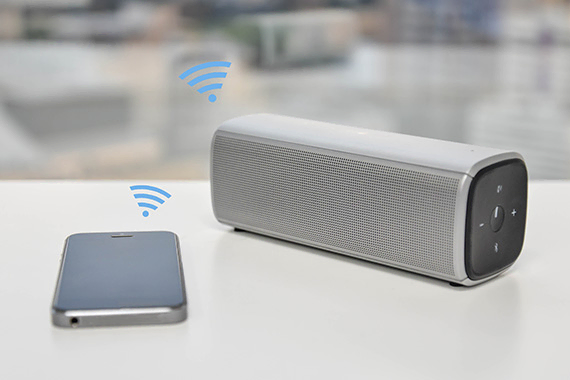
major vendors
- Infineon (evaluation kit/module)
CY8CKIT-042-BLE: PSoC Based Bluetooth 4.2 Development Kit
CYBLE-212019-00: Programmable PRoC Bluetooth Module
- Silicon Labs (evaluation kit)
SLWSTK6000B: Kit for Zigbee, Thread and BLE evaluation
- Texas Instruments (evaluation kit)
Three features of SensorTag (CC2650STK)
In the case of Bluetooth, there are many cases in which an abundance of SDKs and sample codes are available. Each company has different points, such as how to make a GAT according to each usage scene, but I think that the shape and ease of development are also selection criteria.
Zigbee
Zigbee is a wireless communication method centered on 2.4GHz, similar to Wi-Fi/Bluetooth. Appeared around 2003-4. Even now, it is used in many situations, and is a powerful communication method for systems that do not send or receive data to smartphones.
It is a wireless standard that is very compatible with home automation lighting control and smart locks, and the market has been very active, such as the appearance of AI speakers equipped with Zigbee hubs as standard last year.
Compared to Bluetooth and Wi-Fi, the transfer speed is lower, but the lightweight data communication method is very popular. Recently, there are some that can configure mesh shapes.
Zigbee is widely used as a wireless network system for commercial equipment. It is common to use a dedicated module with a PC, and it is not installed in smartphones. In general, by using Wi-Fi and Ethernet together with gateway devices, a method is adopted in which Zigbee network information is linked to external services.
The Zigbee module itself is used to send and receive data via serial interfaces such as UART and SPI, just like Wi-Fi.
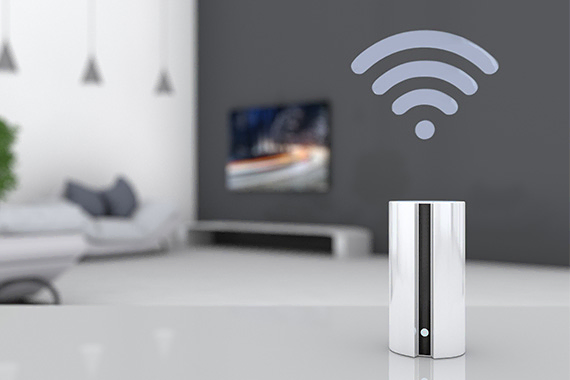
major vendors
- Silicon Labs (evaluation kit)
SLWSTK6000B: Kit for evaluating Zigbee, Thread and BLE
Zigbee also often has an abundance of SDKs and sample codes. The easiest way is to derive from sample code for each usage scenario.
Thread
Thread is one of the IoT device communication standards advocated by Google, and uses the same band as Zigbee. Like Wi-Fi, the Thread module itself is used to send and receive data via serial I/F such as UART and SPI. Although there is little information, there is also content using Thread on my site.
APS Laboratory: Explanation of Thread communication (IoT wireless standard)

major vendors
- Silicon Labs (evaluation kit)
SLWSTK6000B: Kit for evaluating Zigbee, Thread and BLE
In many cases, there are plenty of SDKs and sample codes available. The easiest way is to derive from sample code for each usage scenario.
Sub-GHz
Sub-G, as the name suggests, is a communication method that performs wireless communication in the 1 GHz or lower band, and is mainly used for power meters and industrial equipment, mainly in the 920 MHz band.
Wi-SUN, which uses broadband, a group of specified low-power radios called narrowband (426/429MHz), and bands such as EnOcean (315/868/905MHz) are also included.
In Japan, it has been standardized as ARIB STD-T108 and is used as the standard for electric power meters and ECHONET lite. Although the communication speed is inferior to 2.4 GHz, it has a long range of radio waves, is resistant to reflection and diffraction phenomena, has many channels, and has gained support from business users who require a stable usage environment.
The usage of the Sub-G module itself is to send and receive data via serial I/F such as UART and SPI, just like the previous modules.
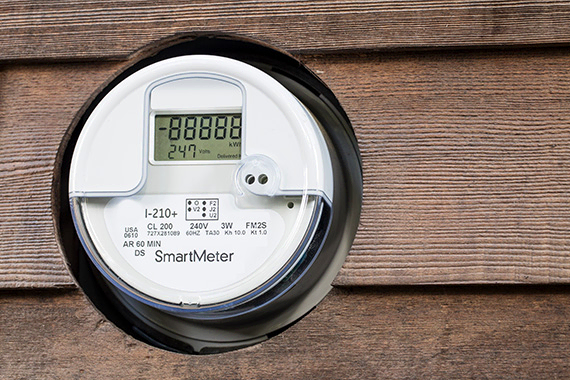
major vendors
- Texas Instrument (evaluation kit)
LAUNCHXL-CC1310: Achieves Sub-GHz long-range wireless communication with ultra-low power consumption
Many companies provide SDKs and frameworks for Sub-G communication, and the easiest way is to derive from sample code according to each usage scene.
Of course, there are many wireless communication methods that have not been introduced here.
For example, narrowband communication lines such as LoRa and SigFox, networks specializing in mesh topologies such as SmartMesh, and advanced standards such as Bluetooth 5.0 are increasing.
It is wise to be able to select the right wireless module for the right place without sticking to one wireless method.
Summary
Finally, I summarized the evaluation kits and wireless modules introduced so far. Even the same vendor may offer different wireless modules. Find the perfect wireless module for your IoT device development.
| Manufacturer | Wifi | Bluetooth | Zigbee | Thread | Sub-G |
| Cypress | - | ◯ | - | - | - |
| Microchip | ◯ | ◯ | - | - | - |
| Texas Instruments | ◯ | ◯ | - | - | ◯ |
| Silicon Labs | - | ◯ | ◯ | ◯ | - |
| ROHM | ◯ | - | - | - | - |
Click here for recommended articles/materials
Three Perspectives to Consider in Motor Control [Business Trip APS Laboratory]
Types of Sensors Required for Industrial Robots [Business Trip APS Laboratory]
Introducing sensors for IoT devices by type
APS Laboratory [Head] Yasuo Urabe

1995 Engaged in the development of in-house products at a semiconductor trading company
2001 Engaged in a wide range of tasks as FAE for Ethernet products at SMSC (now Microchip)
2010 Joined Altera (currently Intel) and engaged in FPGA FAE
2011 In embedded system RTOS (eForce), OS sales and consulting as sales technology
Since 2015, he is currently the head of the APS Laboratory.
We provide a wide variety of contents such as hardware, software, digital, analog, communication, and power supply in an easy-to-understand manner from an engineer's perspective.
book
Contributed articles on Mbed and Cortex-M cores, focusing on Ethernet, for CQ Publishing

